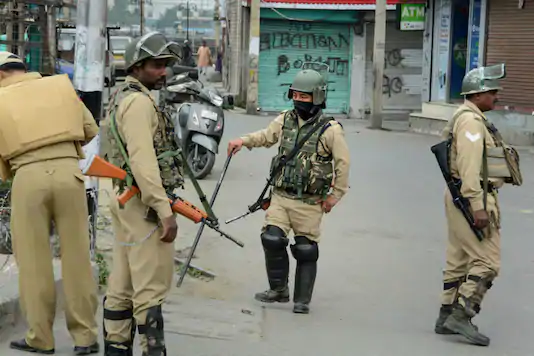
SOURCE: Lt Gen (Retd) DS Hooda / NEWS18
On May 3, we heard the tragic news of the martyrdom of a commanding officer and his team during counter-terrorist operations in North Kashmir. Almost immediately, social media and WhatsApp groups were flooded with views bringing out weaknesses in the army’s operating procedures in Kashmir, dissection of force ratios of security forces vs. terrorists killed, and the rise of a new wave of militancy in Jammu and Kashmir.
Three days later, Riyaz Naikoo, the leader of the terrorist group Hizbul Mujahideen, was gunned down in an encounter in South Kashmir. There were instant media headlines of how this hugely successful operation had avenged our martyred bravehearts. It was also claimed that the killing of Naikoo had broken the backbone of pro-Pakistan terror outfits in South Kashmir.
These two incidents reflect what Robert D. Kaplan calls the amplification of ‘presentness’. In his book, The Revenge of Geography, he writes, “the media amplify presentness, the rage and ecstasy and virtue —whatever the case may be —of the present moment, for good and for bad. In other words, politics in the mass media age will be more intense than anything we have experienced, because the past and future will have been obliterated.”
The overemphasis and focus on individual events have complicated not only politics in Kashmir but also the crafting of a comprehensive strategy for conflict resolution. A terror strike has the social media baying for revenge, while a successful operation that follows appears to satiate this demand. We, therefore, seem to lurch from reacting to one incident after another rather than following a well-thought-out path.
It is often asked whether we are succeeding in Jammu and Kashmir. Depending on whom you ask, you could get different replies. In my view, the more pertinent question is — what are the objectives and parameters against which success is being measured?
If our primary aim is to eliminate terrorists and prevent cross-border infiltration from Pakistan, we could say that we are succeeding. Since 2015, more than 1,000 terrorists have been eliminated along with their top leaders, and only about 250 terrorists remain active in Kashmir. Pakistan continues to push in terrorists, but there is also no denying that it has been put under a fair amount of pressure due to Indian military actions along and across the Line of Control. This has been complemented by an aggressive diplomatic posture by India.
However, if our objective is a peaceful psychological integration of the Kashmiri population with the rest of India, success remains elusive. There is widespread extremism in the Valley, and a large section of the community feels alienated. The promise of development, made after abrogating the provisions of Article 370, is yet to materialise in any significant way.
This is perhaps a time to review our strategy for Jammu and Kashmir. The start point must be the defining of clear political objectives by the government. The lack of political goals results in a mismatched military strategy. Leslie Gelb and Richard Betts, in an outstanding book, The Irony of Vietnam, write about this problem during the Vietnam War, “Administration leaders persistently failed to clarify US objectives in concrete and specific terms. Uncertainty and ambiguity in reports were therefore bound to emerge, for no one could be certain what he was measuring progress against or how victory could be defined.”
In developing any strategy to deal with a dissatisfied and rebellious ethnic group, both coercion and incentive are essential elements. However, a singular approach that focuses only on coercion rarely succeeds.
Some people point out the examples of Tamil Tigers and Chechnya to suggest that the overwhelming use of force can defeat rebellions. After the Russian assault on Grozny, the capital of Chechnya, the United Nations called Grozny the “most destroyed city on earth”. The Sri Lankan civil war is estimated to have caused 100,000 civilian deaths. These models involve significant collateral damage, and I do not see the Indian State going down this path.
A healthy dose of ‘inventivisation’ is required for Jammu and Kashmir. This could be a mix of political empowerment (upgrading from union territory to statehood), economic development, protection of ethnic identities, outreach to the civil society, engagement with the youth and countering radicalisation. All this is not unknown, but there does not seem to be sufficient focus on these aspects, perhaps because they do not attract high media visibility. As a result, success or failure in these areas is rarely factored into our overall strategy.
Social media poses enormous challenges for leaders. As Henry Kissinger points out in his book, World Order, “The temptation to cater to the demands of the digitally reflected multitude may override the judgment required to chart a complex course in harmony with long-term purpose. The distinction between information, knowledge, and wisdom is weakened.” The resolution of the Kashmir problem requires a strategy crafted with political and military wisdom and one that is not hostage to individual high-profile events.
The author is former Northern Commander, Indian Army, under whose leadership India carried out surgical strikes against Pakistan in 2016. Views are personal.
https://defencenewsofindia.com/is-govts-kashmir-strategy-a-success-answer-lies-in-peaceful-integration-of-kashmiris-not-just-counter-terrorism/






